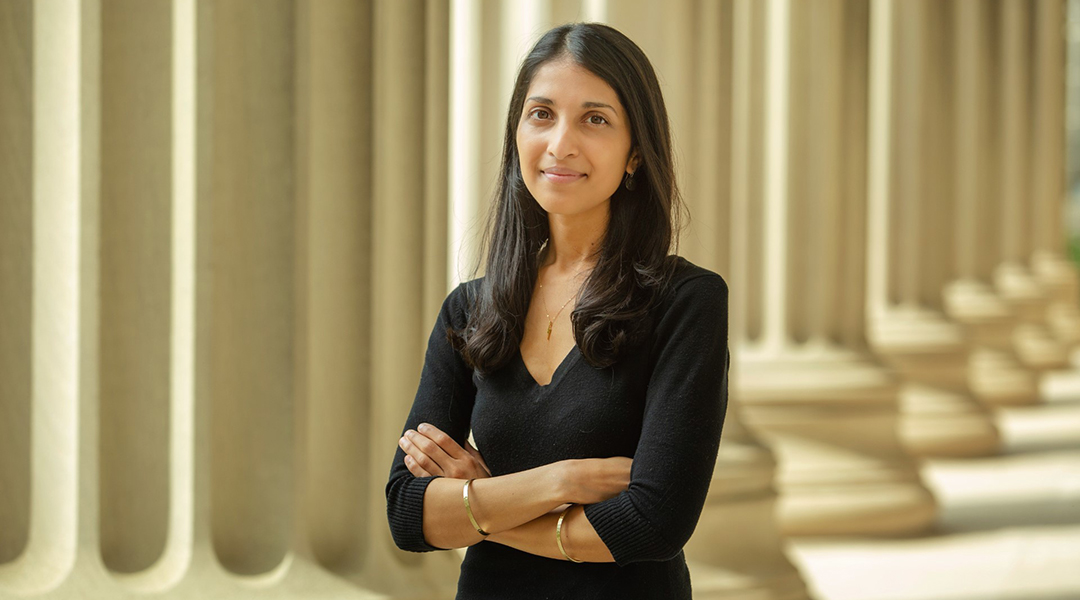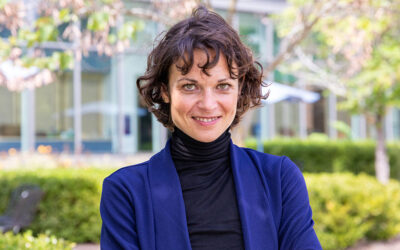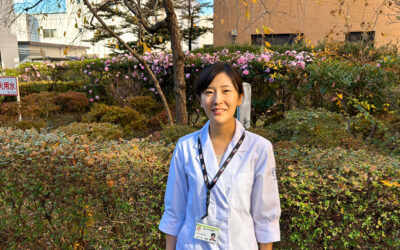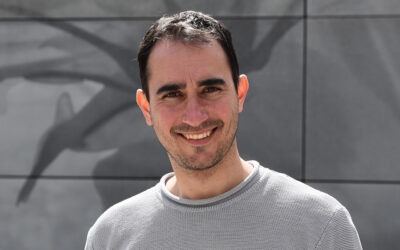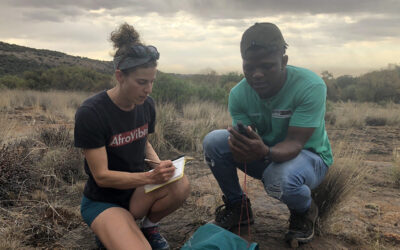Hailing from a family of engineers (her grandfather, father, and mother are all engineers), Ritu Raman’s journey into engineering was practically predestined. Even now as a professor at MIT, she continues to tap into her family’s scientific backgrounds, whether it be discussions about everyone’s research or collaborating on her latest endeavor, her first book about biofabrication, which was brought to life by her mother’s illustrations.
Raman’s passion for science is palpable and has earned her many prestigious accolades during her career, such as her inclusion in Forbes’ 30 Under 30 list while working as a postdoctoral researcher at MIT. Today, she is the d’Arbeloff Career Development Assistant Professor of Mechanical Engineering at MIT and currently leads a laboratory that focuses on engineering biofabrication solutions with the goal of connecting living systems with machines.
Raman and her team aim to engineer an artificial version of the body’s neuromuscular system to decipher, monitor, and perhaps one day repair the communication between nerve and muscle cells. Her research could have far reaching implications for people suffering from neurodegenerative diseases such as amyotrophic lateral sclerosis (ALS) or those who have sustained severe injury and need to regain mobility.
Throughout her career, Raman has also been a strong advocate for female scientists. Acknowledging her own unique upbringing and exposure to science, she devotes herself to supporting women striving to become leaders in STEM. Her advocacy and stellar contributions to scientific advancement brought her to the attention of the “#IfThenSheCan” exhibition at the Smithsonian Museum in Washington D.C. The exhibition features 120 life-sized, 3D-printed statues of women in science to help spread awareness about the impact of contemporary women STEM innovators and role models leading a variety of fields.
Raman took the time to talk to us about her work, how her family’s loves of science has influenced her, and how anyone can become an advocate.
What sparked your interest in engineering design and biofabrication?
My interest in engineering and design was sparked very early because my mom, my dad, and my grandfather were the three adults that I spent the most amount of time with growing up, and they are all engineers (chemical, mechanical, and civil engineering).
I was born in India, but I moved to Kenya when I was quite young because my dad was putting up communication towers in rural villages. I was able to see sort of the design, construction, and impact of an engineered solution in real time, and that was a very compelling demonstration of a job where something is created and has a positive impact. Those sorts of experiences made me very excited about engineering at a fairly young age.
When I started college, my goal was to become an engineer, specifically with the purpose of going into space through some sort of aerospace program, but I enrolled in an introduction to biomedical engineering class when the introduction to aerospace engineering class was full. That class was super interesting to me because it was the first time I learned that engineers could have been impact on medicine. You do not have to be the person suturing somebody up or using syringes. You can be the person designing the medicine or the device, and that was very exciting.
At the end of that class, they talked about the very new emerging field of tissue engineering and how you could build with cells like they are any other material, and to me that was very compelling and has been the driving motivator of my work in biofabrication over the past decade.
You said your family was your inspiration for your job choice. Have they also have been your mentors?
Yes. I talk to my parents every day. We are just very similar people. When you are a kid, your parents are your parents, but when you are adults, you have to find common interests and be friends. I am mostly working on projects in the lab, but my parents have a lot of hands on projects going on all the time at home. I talk about my projects with them and we troubleshoot things together. It is a big part of our dynamic.
Can you tell us a bit about the research focus of your laboratory: adaptive biological/living materials?
I think broadly you could say biofabrication is engineering a functional material or machine using living cells, and this is the overarching goal of our lab. We focus on a specific tissue system, the biological motor control system, thinking about how we power and control voluntary movement in our bodies. We are interested in how to build tissue models of skeletal muscle, motor neurons, and sensory neurons in a petri dish.
In terms of application, half of the lab focuses on medical applications of these platforms, asking how muscle damage, nerve damage, or neurodegenerative disease, for example, impact mobility and how can we develop new therapies that might help restore mobility to people who have lost it.
The other half of the lab is focused on robotics, thinking about how can we use the actuation of living muscle to power robots that walk and swim and grip and do a lot of interesting things and then have this additional capability of being able to dynamically respond to their environments, which is something that traditional robots that are made out of non-biological materials cannot do.
The third emerging area of the lab is focusing on 3D printing and how we manufacture multi-cellular systems and what kinds of new tools and techniques and protocols we need to be able to do that.
How do you conduct the design process of your biofabrications/bio-hybrid devices?
We are still evolving our design philosophy. Design is a field on its own and not something I have been formally trained in, but the MIT Mechanical Engineering Department has a huge faculty that does specifically focus on the theory and practice of engineering design. We work very closely with a lot of collaborators inside and outside our department that help us in our research.
Is there a finding or discovery made by your laboratory that you are particularly proud of?
A new story is coming out of our research soon. A lot of people in the past, when thinking about exercise, think mostly about the impact on muscle i.e., I exercise, and I get stronger. Certainly, we have shown that our systems can do that as well, but there has been this growing idea in the field in biology that exercise has systemic, whole-body effects and that muscle, when exercised, secretes all of these cytokines [signaling proteins that help regulate inflammation] that can act as signaling molecules for other cells.
We have shown that when we exercise our muscle implants after we implant them in vivo, that we can accelerate the rate at which they are integrated into the surrounding tissue and the rate of functional recovery. We think the reason for this is because of enhanced vascularization and enhanced innervation of exercised muscle. These results have made us super interested in not only what muscle can do for itself, but how it impacts all of the systems in our bodies and there is a whole world to uncover here.
Supporting women in STEM has been very important to you throughout your career. What initiatives have you launched so far or participated in and what activities have you planned for the future?
It is very easy to look at the world and get a little panicky, thinking we have so many issues that we have to solve. If we have all these issues, we need as many of the best people working on them as possible. If you keep back half the people in the world from working on solutions to our problems, we all mutually fail together.
My efforts have largely focused on women because that is my experience, and I hope that things I have experienced can help shape the initiatives that we deploy to be most impactful.
I served as an If/Then Ambassador for AAAS [Association for the Advancement of Science] for three years starting in 2019, where we were a group of about 100 women around the country at different stages of their careers who participated in different things like museum exhibits, TV shows, and an exhibit at the Smithsonian of 3D-printed statues of women. It’s getting younger people to not just see one or two women, but a variety because then they can more easily find someone who is compelling to them or reminds them of themselves.
When I was a postdoc at MIT, I heard from many people that it was difficult to find women speakers for events like seminars. I decided to make a database of women at MIT — graduate women, postdocs, research scientists, etc. — with their technical areas of expertise that is searchable and publicly available. The database is called WISDM (Women in Innovation and STEM Database at MIT) and there have been WISDM sponsored events and speaker series throughout the Boston area that have been ways to highlight the voices of women in our community.
Right now, I am doing a lot of things that are more focused on helping women through the transition from postdoc to faculty life. There are a lot of “rising stars” workshops where you help candidates navigate the application process and, in particular, focus on issues that I wish women did not have to deal with, like being asked inappropriate questions about partners or family or how that might play into building their lab, and instead steer them towards academic success.
The number of women in STEM has improved in the last couple of years, however, we are still far away from equity. What is needed to bring more women to the table and make them thrive?
One of the reasons it has improved is because there have been many initiatives focused on the earlier stages of interest in STEM. When I was growing up, there was not much science educational content targeted at me. Now there are a lot of TV shows, toys, and other representation in media. We are bringing a lot of women in and 50% of MIT undergraduates are women, and I am very happy about this progress.
I think the issue is that we were not targeting as many people later in their careers and, obviously, people growing as leaders and being supported throughout their careers is important to keep this going. It does not make sense to train a bunch of people and then not have them lead companies or lead institutions and do great work. I think part of that is because there just were not many women in previous generations of STEM and the ones that were there were struggling to survive. It is not the job of these women to drag everyone up when they are trying to keep themselves afloat, but as we get more women, like myself and others, progressing through the ranks, hopefully we can share the burden and bring more people up with us.
Do you have any suggestions for someone who wants to be active in supporting more women in science?
First, I like to remind women that their very existence and persistence in science is a form of activism. If all you can do is just be a scientist who is also a woman, then that is enough and nothing more is required. I think that is a great place to start because one of my senior female mentors, one of the very few that I have, told me once that the most important thing I could do for women in science is to just be a successful woman in science.
Second, I have had the most success in initiatives that focus on issues that are specific and local to my community tackle it like any kind of scientific or engineering problem. What is state-of-the-art, what is missing, and what can I do specifically? The more local it is, the more likely you can have an impact that is reasonable. Then you can scale it eventually. I think that specificity, looking for problems that you can solve in your hyperlocal environment, is the most impactful thing that you can do to have a positive impact.
What is …
Your favorite hobby?
One of the things I have started doing recently that has brought me a lot of joy is playing piano. I used to play when I was younger and then I stopped after high school because at some point there is lot of pressure to be good at something and piano stopped being fun for me, and I did not play for many years.
Recently though, I bought a house and my parents asked if I wanted this old upright piano and so I started playing. My rule for playing is that I do not let anybody listen, I do not perform for anyone, and I do not have any sort of goal. My plan is just to make music and to bring myself joy. It is a very selfish act in a good way and that has been fun for me. I am a very goal-driven person, and so to do something that is just for fun that I do not have to be good at is a wonderful joy.
Your favorite travel destination?
I moved around a lot growing up and so all the travel I did was stressful, going from India to Kenya, Kenya back to India, and then all these places in the US. Last year, I finally traveled like I had always wanted to and went to Scotland and France by myself. It was really nice to go out and explore and I think what I learned is that because I have lived in so many places, I do not love going to the same place over and over. I like to go to a new place, not necessarily see all the sites, but just walk around until my legs hurt, see something new, spark new ideas, and just feel more connected to the global community.
Who would play you in a biopic?
I really like Freida Pinto and I follow her on Instagram. I would love to have her play me in a biopic.
A discovery (any research field or time) you wish you would have made?
From the neuromuscular realm, I have been really compelled to see the treatments for spinal muscular atrophy that are based on ASO-type drugs [short single-stranded antisense ribonucleic acid oligonucleotides] and seeing the functional impact it can have on somebody who would not have been able to move or walk at all but now can.
This is mostly done in babies, but I think this is a compelling case of how much mobility matters and how much restoring that can do to improve somebody’s health and quality of life. I wish I had done that, but I hope that some things we do in our lab can contribute to similar discoveries in the future.
A person (famous or not) you would like to have dinner with?
The one family member I never got to interact with, because she passed away before I was born, was my mom’s mom. I would like to meet her not just from a personal perspective, but as a woman in science. I am a mechanical engineer and my mom is a chemical engineer, but my grandmother actually studied botany.
I would love to hear what it was like to be a woman interested in science at that time, and hope that she would be proud of all the advances that have happened since then. Being a woman in science is currently difficult but obviously I am benefiting from the fact that I am already third generation, which is very rare. I would love to talk to her.

